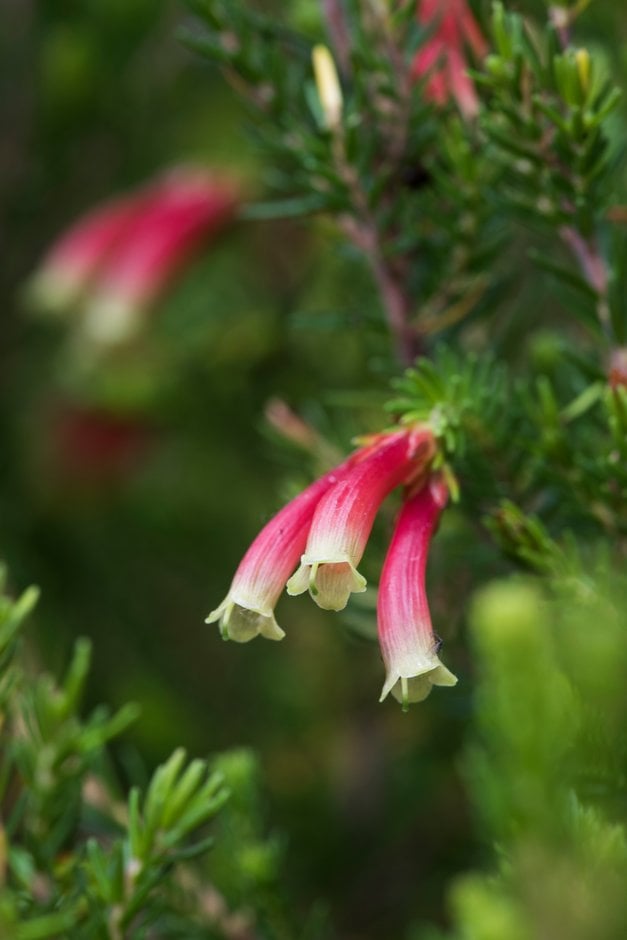Size
Ultimate height
2.5–4 metresTime to ultimate height
10–20 yearsUltimate spread
0.5–1 metresGrowing conditions
Moisture
Moist but well–drainedpH
AcidColour & scent
| Stem | Flower | Foliage | Fruit | |
| Spring | Green | |||
|---|---|---|---|---|
| Summer | Green | |||
| Autumn | Green Red | Green | ||
| Winter | Green Red | Green |
Position
- Full sun
Aspect
South–facing or West–facing
Exposure
Sheltered Hardiness
H2Botanical details
- Family
- Ericaceae
- Native to GB / Ireland
- No
- Foliage
- Evergreen
- Habit
- Bushy
- Genus
Erica can be prostrate or erect, evergreen shrubs with fine, needle-like leaves in whorls, and racemes or panicles of small, bell-shaped or tubular flowers
- Name status
Correct
- Plant range
- S Africa (Cape)
How to grow
Cultivation
In very mild areas, grow in moist but well-drained, acidic soil in full sun in a very sheltered position. Elsewhere grow in a frost-free greenhouse or conservatory in lime-free potting compost with extra sharp sand, making sure the compost is kept moist
Propagation
Propagate by semi-ripe cuttings in mid- or late summer
Suggested planting locations and garden types
- Mediterranean climate plants
- Patio and container plants
Pruning
Pests
Generally pest-free
Diseases
May be susceptible to fungal diseases, including honey fungus (rarely), and Phytophthora root rot, in wet conditions
Get involved
The Royal Horticultural Society is the UK’s leading gardening charity. We aim to enrich everyone’s life through plants, and make the UK a greener and more beautiful place.
